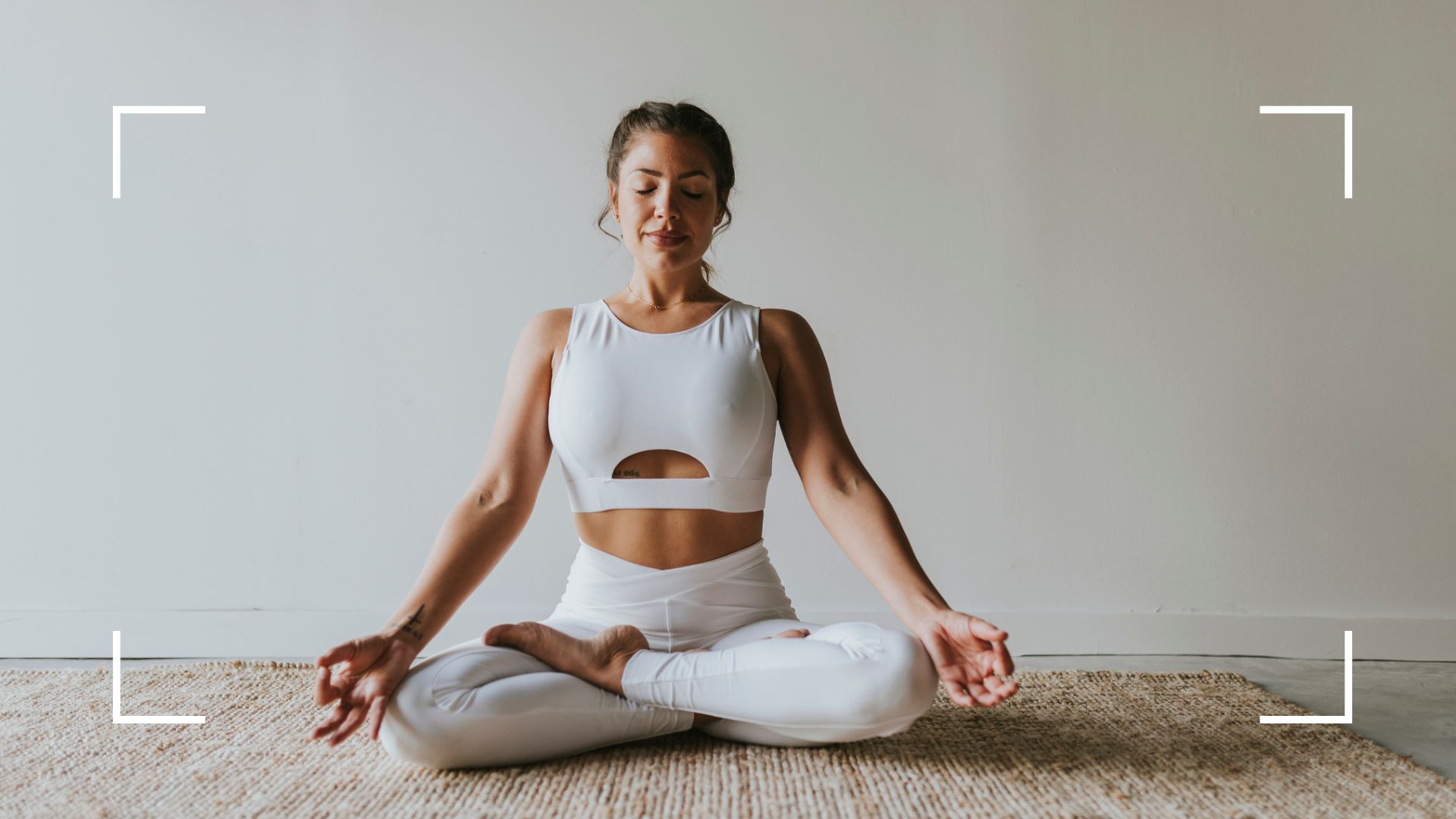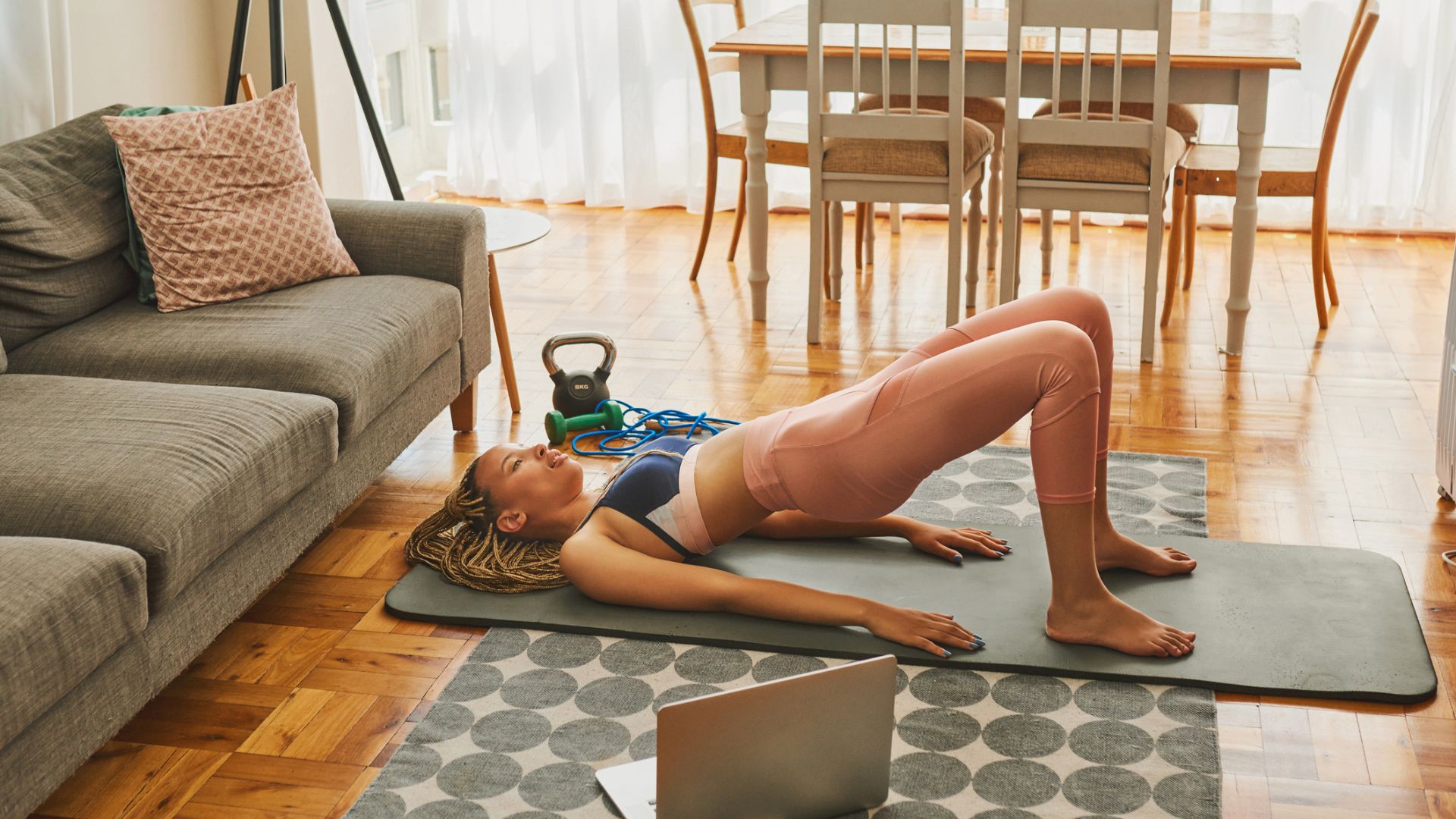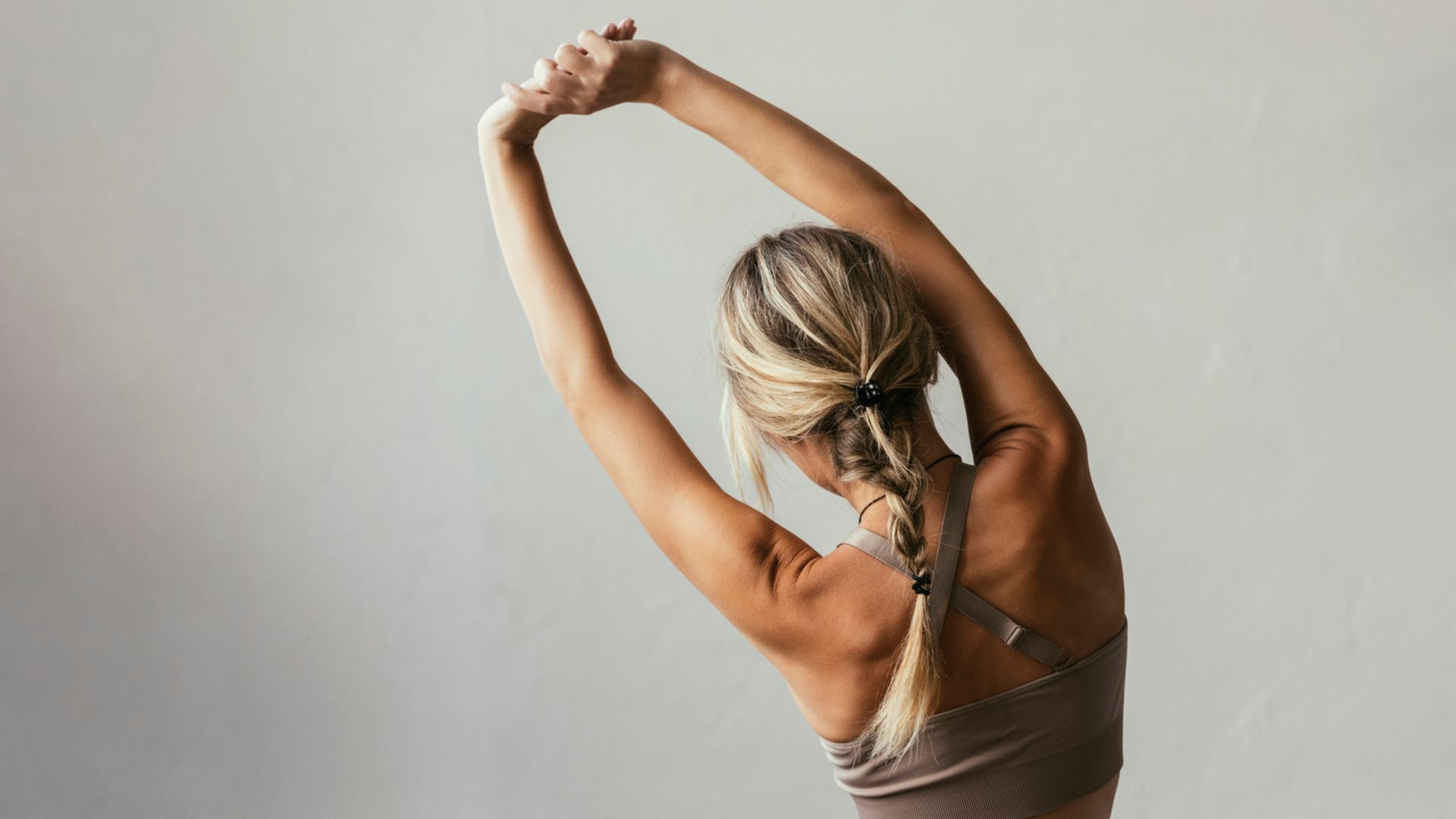How to fix posture - easy changes to help beat pain, boost energy and improve mood
Knowing how to fix posture could be the key to feeling better...


While you'll know well that learning how to fix posture is important, doing so can seem like an uphill battle. Particularly if you've spent years in the habit of slouching in front of the TV or your laptop, or have a penchant for high-heeled shoes. But, the good news is that it's never too late to straighten out your relationship with your spine - and it is very worth your while.
Over time, repetitive hunching - whether standing or sitting - can cause your lower back to curve excessively and push your stomach outwards. As well as perhaps not being the best look, it can also harm your internal health. This includes unnecessary strain on the joints, headaches, poor circulation and back as well as neck pain. What's more, research by the University of Auckland found that slumping could leave you feeling down and miserable, whereas sitting upright was linked to feeling less scared and more enthusiastic.
Fortunately, there are a number of ways to relieve tension and achieve better posture. Depending on your daily routine, you can care for your spine by enlisting everything from yoga for beginners for a good stretch, to understanding how to build the best bedtime routine and increasing physical activity (you'll certainly want to invest in a pair of the best running shoes for women). So, sit up and find out about how these simple tweaks and more can help you...
How to fix posture - 9 expert tips
1. Align your feet
Improving your posture is about more than simply sitting or standing straighter - and neither is it all about your spine. “I always tell my clients to start with their feet if they want to shift their posture,” says osteopath Monica Franke. Once you've balanced things on floor level, you can then work your way upwards.
Franke recommends checking your alignment a couple of times a day until it becomes your new normal. Do these three steps:
- Take three long, slow breaths with feet contacting the ground - aim for 50% of the weight in the heel, 30% around the big toe and midfoot, and 20% on the outer two toes.
- Let the knees soften a little, and allow the back of your pelvis to gently lengthen down.
- Breathe softly into the space between your shoulder blades and then breathe out, letting the lower ribs to come together and back. Imagine the way you squeeze a tube of toothpaste, it narrows to push the paste out.
- Allow your shoulders to soften into the back of the ribcage - which is where we want them, not squeezed back or up in our ears.

2. Swap your shoes
Slipping on supportive footwear is one of the most effective changes to make. “High heels, sandals, flip-flops and plimsoll-style trainers are all proven to add pressure and stress to your spine,” notes physiotherapist Phil Evans. “This is because there’s a lack of cushioning to absorb shock, and the same goes for bare feet and slippers. Without cushioned footwear, your lower back has to take all of the impact every time your foot lands on the floor - which isn’t good for your Achilles, knees or hips either."
Evans recommends wearing soft, well-fitting shoes at all times to improve posture. "It could reduce your lower back pain by as much as 25%,” he adds. Need some footwear inspiration for your next Nordic walking trip? Check out our guide to the best women's walking shoes.
Sign up to our free daily email for the latest royal and entertainment news, interesting opinion, expert advice on styling and beauty trends, and no-nonsense guides to the health and wellness questions you want answered.
3. Always sit upright
Don't forget the basics. “Sitting up straight wakes up your brain stem, giving you an awakening feeling all over,” points out nutritionist Charlotte Watts, author of The De-Stress Effect. Meaning it's an easy way to boost energy levels.
Not sure where to start? One of the most effective ways to correct posture from the comfort of your seat is to practice the gentle poses set out in the Feldenkrais Method, which was developed in the mid-20th century. “It doesn’t matter what shape you’re in or how old you are, anyone can do it,” explains Jeff Bell, personal trainer and owner of Spectrum Wellness in New York. “Each move is performed slowly without pulling or pushing - it’s one of the safest forms of stretching."
How to do the Feldenkrais Method at home:
- Sit upright in a chair (without leaning on the backrest) and face straight ahead.
- Slouch by slowly rounding your back, tilting your pelvis towards your bottom.
- Straighten, then slowly tilt your pelvis forward towards your legs, as if trying to improve your posture.
- Tilt your pelvis back and repeat, slouching and straightening several times, noticing the difference in how your body feels.
4. Work more comfortably
Whether you're working from home or in the office, it's vital to make sure you're sitting with the middle of the screen of your computer or laptop at eye level.
“Your desk and chair should be adjusted to the height that allows you to reach the work surface easily,” says Evans. “If you’re looking downwards your spine becomes more and more rounded, stretching the muscles and putting more force on the joints and pressure on the discs. Tension in these sensitive areas is likely to cause pain in the neck and shoulders so try to keep your shoulders relaxed, upper arms to fall normally at your sides and elbows close to your body and bent to 90 degrees.”
Additionally, there's more to consider when it comes to your chair. Evans notes that it should have a full back that extends from the seat of the chair to your shoulders or above, to support you and prevent slouching. “Keep your feet flat on the floor and slightly ahead of your knees, which are bent at a 90- to a 120-degree angle,” he adds.

5. Increase your movement
Getting in enough physical activity is also key - whether going for a stroll or doing some strength training. “Humans are not designed to sit, it goes against the fundamental rules of evolution,” points out Evans. “Being sedentary multiplies the pressure on your spine ten times, compared to when you stand tall. This often triggers pain and tension in the neck and shoulder region because many of us slouch, causing the muscles in your spine that are designed to protect you - meaning the core muscle group - to simply not work.”
If you do still have to sit for long periods there are steps you can take to counteract these effects. Get up for a quick walk and stretch every 20 minutes to wake up your body. Set a timer on your phone to remind you to stand so that it becomes second nature. Alternatively, you can or invest in one of the best fitness trackers - which can cleverly sense when you've been sedentary for too long - to motivate you to move more.
6. Banish bedtime reading
While it may seem like a great way to learn how to relax your mind, curling up with a novel under the duvet could actually be causing problems with your posture.
“Avoid reading for more than 20 minutes in bed because your head is looking forwards and down, which increases tension in your muscles,” says Evans. “It’s a bit like stretching an elastic band too far, eventually it will fray and even snap. Worse, at this late time of day, your muscles are already tired and weak so placing them under even more pressure will inevitably increase tension.”
If you struggle to get into a comfortable position at night, try snuggling one of the best pillows for back pain to ease spine tension and help you sleep more soundly.
7. Tweak sleeping position
Your bad posture could be all down to the sleeping positions you choose while you snooze. “Avoid nodding off on your stomach because there isn’t a more effective, faster route to self-inflicted damage to your neck and shoulder,” says Evans. “Every part of your neck and shoulder joint is twisted and in the wrong position.”
Just like for back pain, you may also find that purchasing one of the best pillows for neck pain is a big help. “Sleep with one soft pillow if possible, because taking away a second pillow lowers the amount of stretching and tension in your neck,” notes Evans. Not sure whether to bother with new bedding? “Frequent headaches, migraines, poor posture and constant shoulder tension are a sign of spending every night in the wrong position,” he adds.

8. Reduce bag strain
Just like stylish stilettos, your favorite tote could be contributing to your posture struggles. “Carrying a handbag on one arm or in one hand adds tension to your neck and shoulder because the weight isn’t evenly distributed, causing one side of your body to be under more pressure than the other,” warns Evans.
“If you carry a bag over the same shoulder all the time, you could end up with a curvature of the spine because that side is working much harder than the other. This will lead to pain, not to mention an unhealthy looking posture.”
The solution? Treat yourself to one of the best backpacks to evenly distribute the weight, and try to keep your load light whenever possible.
9. Use water and ice
We all know the importance of keeping hydrated by drinking lots of water, but using ice and hot water on your body is also a great way of preventing serious shoulder and neck pain and therefore helping to improve your posture.
“At the end of a busy day when you’re feeling a little achy, apply an ice pack to the affected area for around ten minutes, and repeat every hour if necessary,” suggests Evans. “It can also be beneficial to apply a hot water bottle when your neck and shoulder are feeling more stiff than painful. Again, do this for around ten minutes.”
The best exercises to improve posture
Keeping your body flexible and moving is a great way to help look after your spine in the long term. Experts have been speaking about the benefits of yoga for decades and particularly recommend yoga for back pain, while Pilates is also known to have a positive impact too. "They both strengthen the body to fight the impact of aging, especially for those from 40 to 60 years old, " says Evans. "Yoga comprises stretches to make your body more supple, while Pilates improves muscle tone."
These are some key exercises to fit into your workout schedule:
1. The pelvic tilt
One of the main reasons for poor posture, or an inability to hold good posture, is tight hip flexors - these are a group of muscles towards the front of the hips near the top of the thighs. When we sit for long periods, these can become shortened and pull on the pelvis, affecting our posture. Doing pelvic tilts every day is a great way to prevent this and can easily become part of your kegel exercises routine.
How to do a pelvic tilt:
- Lie on your back with your knees bent and feet flat on the floor, with your arms by your sides and palms facing down.
- Keep your spine neutral, meaning in line with your hips and shoulders and not arched.
- Take a big breath in through your nose and then gently exhale through your mouth as you pull your navel towards your spine, tilting your pelvis so your pubic bone lifts. Hold for a few seconds before lowering back down. Repeat ten times.

2. The squat
If there's one exercise Franke always recommends women do, it's the humble squat. “Getting in and out of a chair, car and taking the stairs - these all require very similar mechanics in terms of loading through the feet, hips and spine and stabilizing through the core," she explains. "You can also add elements to this that extend your capacity in your muscles, tendons, pelvic floor, lungs and heart." Indeed, you can push yourself further by loading up with the best dumbbells or the best resistance bands.
How to do a squat:
- Stand with feet hip-width apart.
- Keeping feet flat and back straight, lower into a sitting position as far as you can go.
- Hold for three seconds, then push your heels into the floor and drive back up.

3. The stretch
Re-engage your posture first thing in the morning with a stretch first thing. It will quickly readjust your muscles and shift everything back into place after a night of lying in bed.
How to stretch in the morning:
- Stand with your feet hip-width apart and arms by your sides. Imagine you have a piece of string from the top of your head pulling you up to the ceiling, so you lift your entire body, making it as tall as possible but still keeping your feet firmly placed on the floor.
- Keep your tummy muscles pulled in tight and take a deep breath in. As you inhale, raise one arm directly above your head, then very slightly bend your upper body to the opposite side, hold for a couple of seconds and then return and swap sides. Keep taking deep breaths in and out.
- Repeat these alternating side stretches ten times.


Lauren is a freelance writer and editor with a decade of print and digital journalism experience. While she specialises in covering health and wellness topics - ranging from nutrition and fitness, to women’s health conditions and mental wellbeing - she has written across a diverse range of lifestyle topics, including fashion, beauty, homes, royals and travel.
In addition to writing for Woman & Home and sister title Homes & Gardens, Lauren's work has also been published by Women’s Health, The Times, Daily Telegraph, Elle, Cosmopolitan, The Guardian, Marie Claire, Body + Soul, Stylist, Glamour, Grazia, Red, Dazed Digital, Yahoo Life, The Sun’s Fabulous, Get The Gloss and Hello! among others.